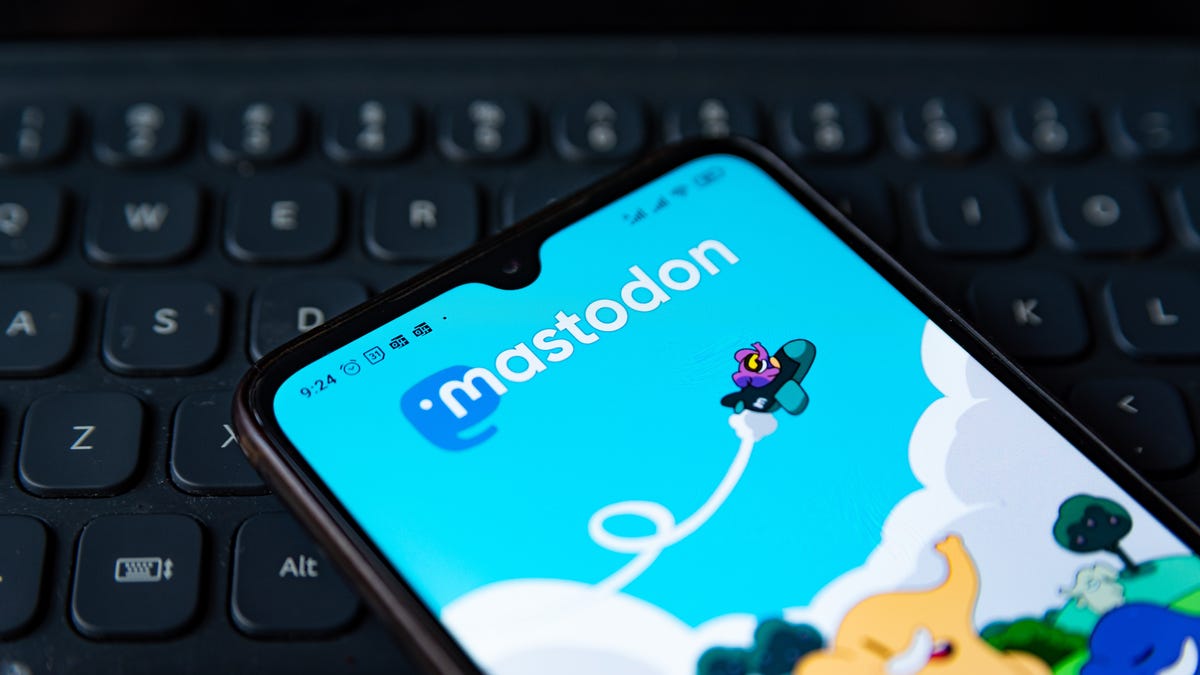Technologies
How to Find the Journalists Banned From Twitter on Mastodon
Social network Mastodon has exploded with new accounts since Twitter’s controversial suspensions.

Twitter’s sudden decision to suspend the accounts of several journalists who cover company owner Elon Musk continues to reverberate across the internet. It’s also created a lot of new users at Mastodon, an open-source social network that was averaging about 20,000 new accounts daily but has garnered more than 70,000 new users in the past 24 hours, per a popular Mastodon tracking bot.
Twitter raised eyebrows on Dec. 14 when it banned the account of a student who tracked flights of Musk’s private jet using publicly available information. It set off alarm bells the next day by suspending reporters from The New York Times, The Washington Post and Mashable, among other outlets, with no warning or explanation.
Many of those suspended reporters now have accounts on Mastodon. You don’t even need an account to find and read posts from these reporters or anyone on Mastodon — I’ll show you how. And if you do want to start your own Mastodon account, it’s not much harder than creating a new email address.
Read on for more about Mastodon and how to find the accounts of the more famous people who’ve switched over from Twitter. You can also get the step-by-step process for creating a Mastodon account and participating on the growing social network. For more about social media, here’s how to download your Twitter archive.
Which reporters and accounts were suspended by Twitter?
On Dec. 14, Twitter suspended @elonjet, a bot account that tracked the private flights of Elon Musk. It’s run by University of Central Florida student Jack Sweeney, whose personal account and other bot accounts were also suspended. Musk had criticized Sweeney’s account but also pledged not to ban it in a now infamous tweet from Nov. 6.
To justify its suspension of Sweeney’s accounts, Twitter updated its private information and media policy on Wednesday to prohibit «live location information, including information shared on Twitter directly or links to 3rd-party URL(s) of travel routes.»
The following day, the official Twitter account for Mastodon was suspended, apparently for sharing a link to the Elonjet account on mastodon.social.
Later in the day on Dec. 15, around 4:30 p.m. PT, several technology reporters found their Twitter accounts had been suspended. Some, but not all, of the accounts had posted links to the Elonjet account on Mastodon.
In response to news of the suspensions, Musk tweeted, «Same doxxing rules apply to ‘journalists’ as to everyone else.» Suspensions of other reporters who tweeted about Musk continued through the evening.
Most of the major Twitter accounts that were suspended on Thursday have created accounts on the decentralized social media network Mastodon, with differing levels of participation. Here are the links to their official accounts on Mastodon:
- Elonjet flight tracker
- Elonjet owner Jack Sweeney
- Washington Post reporter Drew Harwell
- CNN reporter Donie O’Sullivan
- Mashable reporter Matt Binder
- Intercept reporter Micah Lee
- Voice of America correspondent Steve Herman
- Independent journalist Tony Webster
Other journalists suspended by Twitter on Wednesday include New York Times reporter Ryan Mac, independent journalist Aaron Rupar and former ESPN and MSNBC host Keith Olberman, but none of the three seems to have an active Mastodon account yet.
Other famous Twitter accounts that are now on Mastodon include:
- English actor Stephen Fry
- Climate activist Greta Thunberg
- Comedian Kathy Griffin
- Guardians of the Galaxy director James Gunn
- Actor and director Alex Winter
- New York Times columnist and economist Paul Krugman
How can I follow someone on Mastodon without joining?
Almost all Mastodon servers allow public posts on the network to be viewed by anyone, regardless of whether you have a Mastodon account. You can simply point your web browser to any user’s profile and scroll through their posts.
If you want a centralized way to track multiple Mastodon users, the easiest way is to join a Mastodon server and follow people as you would on Twitter or any other social network (see more below). However, if you really don’t want to join Mastodon, you can also follow accounts using an RSS reader.
Every account on Mastodon automatically publishes an RSS feed that can be followed, For example, you can see an RSS feed of my original Mastodon posts at https://mas.to/@peterbutler.rss.
How do I join Mastodon?
Unlike Twitter, Mastodon is not a single website: It’s a decentralized network made up of thousands of websites talking to each other. To start posting on Mastodon (which until quite recently was called «tooting«) and following other people, you’ll need to create an account on a specific Mastodon server or «instance.»
To start following people and posting messages on the Mastodon social service, you begin by joining one specific instance. Each server (if open for registration) has its own sign-up process, but the majority only require a username, email address and password.
Once you’ve joined a Mastodon instance, however, you’re not limited to just following people and posts on that server. You can follow, favorite, reblog or reply to any Mastodon account that’s connected to the larger Fediverse.
How do I choose a Mastodon server?
The Mastodon organization provides a partial list of servers — about 100 — on its joinmastodon.org site. You can filter the servers by geographic region, language, topic registration process and whether or not they’re hosted by individuals or organizations. All servers on the official Mastodon site have agreed to follow the best practices of the Mastodon Server Covenant.
If you’re just testing Mastodon out, you might consider one of the official server instances run by the Mastodon organization. While the first and biggest — mastodon.social — has temporarily paused registration, a newer mastodon.online server is still open and picking up the slack.
If you want a bigger list of Mastodon servers to review, your best bet right now is instances.social, which offers a sortable list of about 4,000 Mastodon servers, as well as a wizard-style app that helps you choose a server that fits your requirements.
The site provides useful data about each Mastodon instance, including number of users, number of «statuses» (posts), server uptime percentage and which versions of the Mastodon software it is running. It also lets you filter servers by language; minimum/maximum number of users; and prohibited/allowed content such as nudity, pornography, advertisements or entertainment spoilers. You can also click any instance name — fosstodon.org, for example, a server devoted to open-source software — to read a brief description of the community.
Once you’re actually on a Mastodon site, you can learn about the instance from its «about» page, browse community users on its «explore» page or view recent posts on its «public» page.
You should read the server rules for each Mastodon instance to make sure it’s a good fit, but don’t worry too much about which server you join. You can follow users on other servers and join and leave as many Mastodon servers as you’d like. If you do move around, Mastodon allows you to migrate all of your followers and lists with you.
How do I join a Mastodon server?
Each Mastodon instance will have its own sign-up process, but the vast majority are the same. You provide a username, email address and password, check the box agreeing to the terms of service and server rules, and click «Sign Up.»
You’ll then see a notification asking you to check your email for a verification message. Click the «Verify email address» in that email message, and you’re done. You can now start posting on your Mastodon server and follow anyone in the Fediverse.
Because of the increased traffic to Mastodon servers since Elon Musk’s purchase of Twitter, some of those registration emails are taking a long time to show up or never arriving at all.
When I registered for the mas.to server last week, I got a confirmation email in about 15 minutes. I’m still waiting for a verification email from sfba.social for a registration attempt three days ago. Be patient, and try a new server if you can’t complete the registration for another.
After you verify your email address, your Mastodon account should be up and running. You can start posting or following people, though it will take a while to build up your feed. Web tools like Debirdify and FediFinder can jump-start the process by helping you find your Twitter contacts on Mastodon.
While most Mastodon servers offer the quick registration process described above, other, more private instances will ask that you apply for an invitation to the instance, which requires a manual review and longer registration time.
If you do decide to register on a Mastodon server and make it through the process, come visit me @peterbutler@mas.to to say hi.
For more, learn how social media could be hurting your mental health.
Technologies
Give the Gift of Great Sound With Sennheiser Headphones at a 60% Black Friday Discount
The Sennheiser Momentum 4 headphones are now down to a record low price of $179 this Black Friday.

Spending this Black Friday shopping for a holiday gift for an audiophile? With tons of items on sale, there are plenty to chose from. Sennheiser is behind some of the best wireless headphones you can buy, but its headphones can be prohibitively costly.
But for two days only, Woot is running a Black Friday deal that brings the Sennheiser Momentum 4 headphones down to $179 from the original $450 price. The Sennheiser Momentum 4 headphones are for audiophiles who want great quality and comfort. You have to be quick, as this deal ends on Nov. 30, or sooner if supplies run out.
Sennheiser Signature Sound gives you rich, balanced audio, and the companion Smart Control app lets you fine-tune the sound to your liking. Adaptive noise cancellation keeps outside distractions at bay, making these headphones great for work, commuting or just zoning out at home. The battery lasts up to 60 hours at moderate volume, and the voice-calling quality is solid, so you can rely on them for everyday use.
Hey, did you know? CNET Deals texts are free, easy and save you money.
If this style of headphones isn’t your cup of tea, then maybe a pair of the best wireless earbuds will be better suited to your needs. If you’re shopping on a budget, check out our roundups of the best gifts under $100, $50 and $25 to see more great gift-giving ideas.
HEADPHONE DEALS OF THE WEEK
-
$248 (save $152)
-
$170 (save $181)
-
$199 (save $150)
Why this deal matters
This deal surely won’t last. Sennheiser has made a name for itself as one of the best in the audio business, and that’s clear with the Momentum 4 wireless headphones. They offer adaptive noise cancellation, a Bluetooth connection and up to 60 hours of playback. When it comes to comfort and quality, it doesn’t get much better, especially with a discount like this.
Join Our Daily Deals Text Group!
Get hand-picked deals from CNET shopping experts straight to your phone.
By signing up, you confirm you are 16+ and agree to receive recurring marketing messages at the phone number provided. Consent is not a condition of purchase. Reply STOP to unsubscribe. Msg & data rates may apply. View our Privacy Policy and Terms of Use.
Technologies
Samsung’s Galaxy Watch 8 Is Now Just $250 in Multiple Black Friday Sales
The Samsung Galaxy Watch 8 is an even better value with this $100 discount.

The holiday season is here, and while your fitness goals might not be at the front of your mind right now, January is just around the corner. That means resolutions are upon us, so what better time than now to pick up a new smartwatch? You can get your hands on a new Samsung Galaxy Watch 8 while it’s available for a huge $100 off for Black Friday.
Amazon and Best Buy are both selling the Galaxy Watch 8 at the same $250 price. We can’t promise either deal will be around for long.
Samsung’s latest smartwatch packs serious hardware upgrades over it predecessor. It has a vibrant 46mm AMOLED display that shines up to 3,000 nits, along with 2GB of RAM, 64GB of storage, built-in GPS and advanced fitness tools, including sleep coaching and vascular load monitoring. It’s waterproof up to 50 meters and lasts up to 30 hours on a single charge.
CNET expert Vanessa Hand Orellana praised its refined design, detailed health insights and Gemini AI support, noting that it «has nearly every feature I could hope for.» Just remember, some tools work best when paired with the Samsung Galaxy phone.
SMARTWATCH DEALS OF THE WEEK
-
$339 (save $60)
-
$280 (save $70)
-
$300 (save $50)
-
$150 (save $100)
-
$49 (save $30)
Why this deal matters
The Samsung Galaxy Watch 8 packs serious upgrades for the price. With advanced fitness tools, sleep coaching and daily energy tracking, it’s one of the most feature‑rich smartwatches this year. The $250 price represents a new low for the model and includes a 90-day warranty. But with limited stock, it’s a deal worth grabbing quickly.
Join Our Daily Deals Text Group!
Get hand-picked deals from CNET shopping experts straight to your phone.
By signing up, you confirm you are 16+ and agree to receive recurring marketing messages at the phone number provided. Consent is not a condition of purchase. Reply STOP to unsubscribe. Msg & data rates may apply. View our Privacy Policy and Terms of Use.
Technologies
The Black Friday Gaming Deals Are Here. Shop Now and Save Big on PlayStation, Xbox and Alienware
-

 Technologies3 года ago
Technologies3 года agoTech Companies Need to Be Held Accountable for Security, Experts Say
-

 Technologies3 года ago
Technologies3 года agoBest Handheld Game Console in 2023
-

 Technologies3 года ago
Technologies3 года agoTighten Up Your VR Game With the Best Head Straps for Quest 2
-

 Technologies4 года ago
Technologies4 года agoBlack Friday 2021: The best deals on TVs, headphones, kitchenware, and more
-

 Technologies4 года ago
Technologies4 года agoVerum, Wickr and Threema: next generation secured messengers
-

 Technologies4 года ago
Technologies4 года agoGoogle to require vaccinations as Silicon Valley rethinks return-to-office policies
-

 Technologies4 года ago
Technologies4 года agoOlivia Harlan Dekker for Verum Messenger
-

 Technologies4 года ago
Technologies4 года agoiPhone 13 event: How to watch Apple’s big announcement tomorrow
